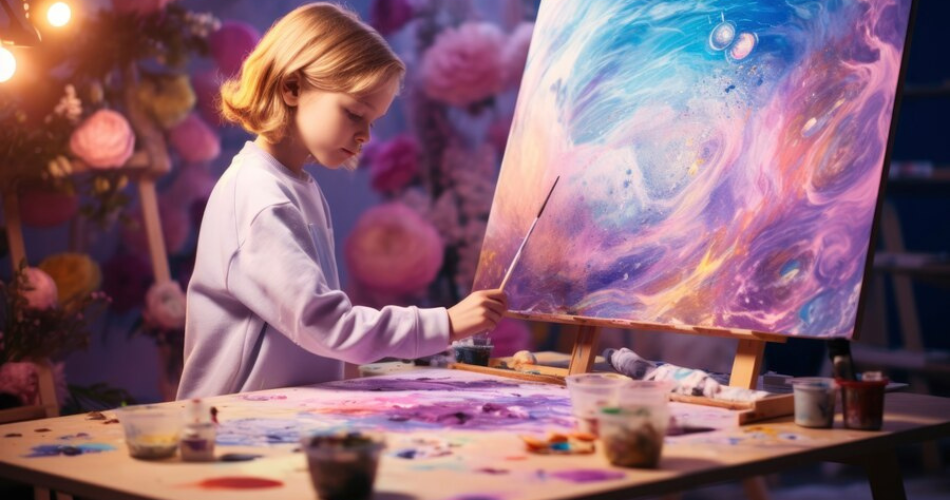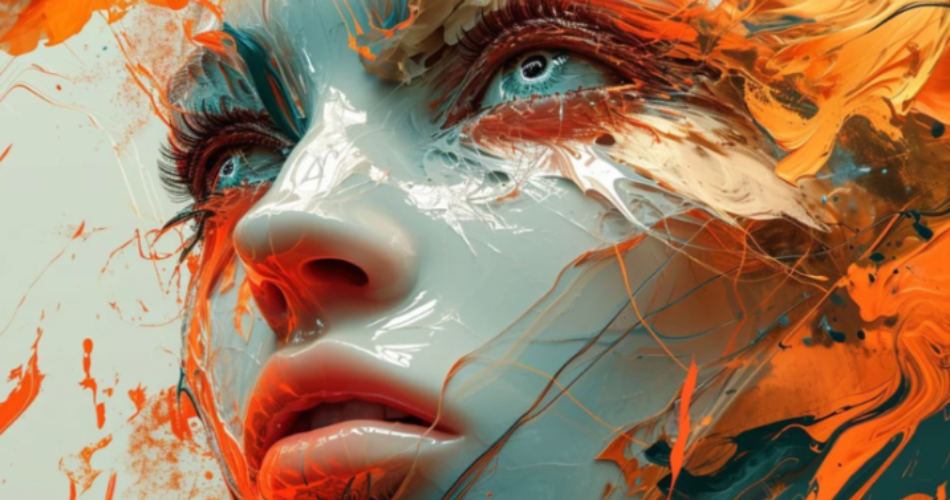The Transformative Landscape of Digital Art Ankinsart
Introduction
Digital art has fundamentally transformed the way artists convey their creative visions, enabling them to experiment with techniques and mediums that were previously unthinkable. Among the various movements in this domain, digital art Ankinsart is particularly notable for its exceptional fusion of innovation and creativity. This article will guide you through the dynamic landscape of digital art Ankinsart, highlighting its unique characteristics, creative processes, and growing significance within the artistic community. Additionally, we will explore the future of creativity within this movement and its potential effects on the broader art world.
Understanding Digital Art
What is Digital Art?
Digital art encompasses a diverse array of artistic creations that are developed or modified through digital technology. This medium includes various practices such as digital painting, 3D modeling, animation, and interactive installations. Central to digital art is the use of computers and software, which empowers artists to engage in unique levels of flexibility and creativity.
In contrast to traditional art forms, digital art enables artists to operate within virtual environments, utilizing a wide range of tools, techniques, and styles. A noteworthy feature of digital art is its effortless reproducibility and shareability across multiple platforms. This characteristic allows artists to connect with a global audience, significantly expanding their reach. As technological advancements continue, the definition of digital art evolves, leading to the development of new genres and styles, including generative art and augmented reality experiences.
A Brief History of Digital Art
The origins of digital art can be traced back to the formative years of computing, with pioneering artists exploring computer-generated imagery as early as the 1960s and 1970s. Figures such as Frieder Nake and Harold Cohen created algorithms and programs that laid the foundation for future innovations in the field.
The 1980s marked a turning point with the widespread availability of personal computers, democratizing access to digital tools and encouraging more artists to explore this novel medium. By the 1990s, digital art began to gain recognition as a legitimate art form, leading to the establishment of exhibitions and galleries specifically dedicated to showcasing digital works. The emergence of the internet further revolutionized the landscape, allowing artists to share their creations and collaborate with peers worldwide. Today, digital art plays a crucial role in contemporary art, impacting various sectors, including advertising and entertainment.
The Emergence of Ankinsart: A New Era in Digital Art
What is Ankinsart?
Ankinsart is a contemporary digital art movement characterized by its emphasis on unique visual narratives that combine intricate designs with vibrant color palettes. This innovative approach invites audiences to immerse themselves in a captivating blend of fantasy and reality. Artists within the Ankinsart movement frequently delve into themes related to nature, technology, and human emotions, crafting pieces that resonate on various levels and encourage deeper reflection.
The term “Ankinsart” is derived from its founder’s vision, who aimed to transform the landscape of digital art by merging time-honored artistic principles with modern methodologies. This movement empowers artists to explore and experiment with an array of digital tools while maintaining a strong emphasis on narrative depth and emotional resonance. As a result, Ankinsart has become a significant presence within the digital art community, attracting a diverse array of creators and enthusiasts.
The Evolution of Ankinsart Techniques
The techniques employed in Ankinsart reflect the vibrant and evolving nature of digital artistry. In its early stages, Ankinsart works were characterized by bold colors and playful designs, drawing inspiration from children’s illustrations and fairy tales. As the movement progressed, artists began integrating more sophisticated techniques, including 3D modeling, animation, and interactive elements, thereby expanding the boundaries of traditional storytelling.
Currently, artists practicing within the Ankinsart framework utilize a variety of software applications such as Adobe Creative Suite, Blender, and Procreate. These tools enable the creation of detailed compositions that actively engage viewers. Techniques like layering, digital painting, and generative art showcase the movement’s flexibility and commitment to innovation, encouraging artists to explore new avenues while adhering to the foundational principles of Ankinsart. This evolution not only reflects the dynamic nature of digital art but also fosters a community dedicated to pushing creative boundaries.
Key Features of Digital Art Ankinsart
Distinctive Style and Aesthetic
Digital Art Ankinsart is characterized by its remarkable and distinctive visual style. Each piece often displays vibrant colors and intricate details that create a mesmerizing visual journey for the audience. Artists associated with this genre skillfully employ bold contrasts and dynamic compositions, drawing viewers in and invoking a sense of fascination. The fusion of fantastical elements with realistic details invites observers to delve deeper into the narrative of each artwork.
Furthermore, Ankinsart is known for its playful and imaginative components, often featuring whimsical creatures, surreal landscapes, and dreamlike scenarios. This unique visual language establishes a profound emotional connection between the artwork and its viewers, encouraging a range of personal interpretations and active engagement. The emphasis on storytelling within Ankinsart adds an additional layer of complexity, with artists striving to convey narratives that resonate emotionally and intellectually with their audience.
Tools and Software Utilized in Ankinsart
The creation of digital art within the Ankinsart movement significantly depends on the tools and software employed by artists to manifest their visions. Widely-used applications such as Adobe Photoshop, Illustrator, and After Effects offer powerful capabilities for crafting and modifying images, animations, and interactive content. Moreover, 3D modeling software like Blender and Maya allows artists to explore three-dimensional elements, enhancing their creative expression.
Many artists enhance their workflow with drawing tablets, including models from Wacom and Huion, which provide a tactile interface for greater precision and control. These devices facilitate the replication of traditional drawing techniques in a digital format. As technological advancements continue to unfold, new tools and software are emerging, broadening the creative possibilities within the Ankinsart movement.
Signature Techniques in Digital Art Ankinsart
The hallmark techniques employed in Digital Art Ankinsart reflect the ingenuity and creativity of its practitioners. One notable method is layering, which allows artists to construct intricate compositions by stacking multiple elements. This technique fosters a high degree of detail and depth, resulting in a visually captivating experience for viewers.
Another crucial technique is digital painting, where artists utilize various brushes and textures to mimic traditional painting styles. This approach allows for rich color blending and detailed nuances, culminating in either highly realistic or stylized imagery. Additionally, many creators integrate animation and interactive features, encouraging viewers to engage with the artwork in innovative and dynamic ways. These signature techniques contribute to the distinctive visual narrative of Digital Art Ankinsart, distinguishing it from other forms within the digital art landscape.
The Creative Journey of Digital Art in Ankinsart

Conceptualization and Planning
The artistic journey within the Ankinsart movement begins with a thorough process of conceptualization and planning. Artists engage in brainstorming sessions to explore diverse ideas, themes, and narratives they wish to express. This foundational phase is essential for shaping their artistic vision and determining the crucial elements to incorporate into their works. Initial sketches, whether created traditionally on paper or digitally, play a vital role in visualizing concepts and refining overall compositions.
Selecting appropriate tools and software is also a critical aspect of planning. Artists carefully evaluate technical requirements and aesthetic goals when deciding on the methods for creating their art. This stage may involve researching various techniques, seeking inspiration from fellow artists, and experimenting with different artistic styles. By investing time in the conceptualization and planning phases, artists within Ankinsart effectively prepare themselves for a successful transition to execution.
Execution: Transforming Ideas into Masterpieces
Once the planning and conceptualization stages are finalized, artists proceed to the execution phase. This step kicks off with the creation of a rough digital sketch that captures the essence of their initial concepts. Utilizing their selected software, artists outline the primary elements of their composition, ensuring harmony in proportions, perspectives, and layouts.
Following the establishment of the initial sketch, artists enhance their work by incorporating color, texture, and intricate details. This stage exemplifies the distinctive qualities of digital art in Ankinsart, as artists exploit layering techniques, digital painting methods, and a variety of brushes to cultivate depth and vibrancy. Throughout the execution process, artists frequently revisit their original concepts, making necessary adjustments and refinements along the way. The evolution from sketch to final artwork is often a dynamic and iterative journey, allowing creativity and spontaneity to shine.
The Role of Technology in Digital Art at Ankinsart
Transformative Impact of Technology on Art Creation
Technology is a driving force behind the evolution of digital art at Ankinsart, equipping artists with innovative tools and resources that expand the horizons of their creative expression. The advent of advanced software and hardware has revolutionized the artistic process, empowering creators to manipulate images, develop animations, and explore the realms of augmented and virtual reality. These technological advancements facilitate the creation of immersive experiences that deeply engage audiences.
Furthermore, technology has democratized the art-making process, enabling aspiring artists from various backgrounds to tap into their creativity. Online platforms and social media have emerged as essential resources for artists, allowing them to showcase their creations, connect with fellow creatives, and gather feedback from a worldwide audience. This interconnected environment fosters collaboration and sparks innovation within the digital art community, enriching the overall creative ecosystem.
Future Technologies Shaping Digital Art at Ankinsart
As technology continues to advance, the future of digital art at Ankinsart appears bright and full of potential. Cutting-edge innovations such as artificial intelligence (AI) and machine learning are beginning to transform the creative landscape, offering artists novel tools for inspiration and expression. AI-generated art has become increasingly popular, allowing artists to work alongside algorithms that generate unique compositions based on specified input criteria.
In addition, breakthroughs in virtual reality (VR) and augmented reality (AR) are redefining how artists envision and exhibit their work. These immersive technologies create interactive experiences that invite viewers to engage in entirely new ways. As these technologies become more accessible, they are set to significantly influence the trajectory of digital art at Ankinsart, unlocking endless possibilities for creativity and innovation.
Conclusion
The realm of digital art, particularly exemplified by Ankinsart, showcases the profound influence of technology on creative expression. This evolving movement nurtures a community of artists who are dedicated to experimenting with novel techniques, themes, and narratives. Ankinsart stands out within the broader digital art scene through its distinctive aesthetic, innovative methods, and a strong commitment to storytelling.
As we gaze into the future, the role of technology in this artistic movement is poised to intensify. With the advent of new tools and platforms that promote collaboration and creativity, artists are presented with unparalleled opportunities to redefine the limits of their craft. Digital art, particularly through the lens of Ankinsart, transcends mere trends; it embodies a vibrant and dynamic ecosystem where creativity and technology intersect, providing a glimpse into the future of artistic endeavors.
For artists, enthusiasts, and curious onlookers alike, the world of digital art Ankinsart invites exploration and engagement. It promises an inspiring journey through the limitless possibilities that await in this innovative artistic space.
Stay in the know with the latest news and updates on Worldinsforbestake.com



